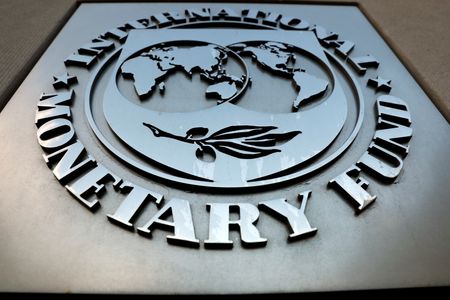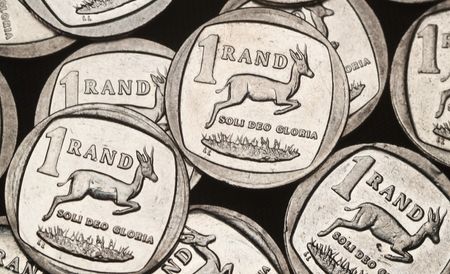By Lawrence Delevingne and Alun John
(Reuters) -Global stocks fell and long-dated bond yields in Europe hit multiyear highs on Tuesday as investors grew increasingly worried about the state of finances in countries around the world, while the dollar gained, and gold touched a fresh record high.
A divided U.S. appeals court ruled on Friday that most of President Donald Trump’s tariffs are illegal, although the court allowed for the tariffs to stay in place until October 14, pending a likely appeal to the Supreme Court.
U.S. manufacturing contracted for a sixth straight month in August as factories grappled with the impact of import tariffs, but an artificial intelligence spending boom is lending support to some segments of the industry.
U.S. stocks traded lower, with the Dow Jones Industrial Average down 0.55%, the S&P 500 off about 0.7% and the Nasdaq Composite down 0.8%.
“Global bond markets are starting the month with a nervous glance towards upcoming government budget discussions in the U.S. and in Europe,” Paul Christopher, head of global investment strategy at the Wells Fargo Investment Institute, said in a client note. “The cumulative increase in yields has caught the attention of equity investors.”
As markets suffered a sharp September shock, the Japanese yen also tumbled after a close aide to Prime Minister Shigeru Ishiba said he would resign from his post.
France’s 30-year government bond yields hit their highest levels in more than 16 years on Tuesday at around 4.5%, while yields on 30-year German bonds hit a fresh 14-year high at about 3.4%. In the UK, 30-year gilt yields notched their highest mark since 1998, as investors looked warily ahead to the government’s autumn budget plans.
Bond yields move inversely to prices, and yields especially on super-long-dated 30-year bonds have been soaring around the world, with investors concerned about the scale of debt in countries from Japan to the United States.
“The pain trade in bond markets seamlessly carried over from August into September,” said Kenneth Broux, head of corporate research FX and rates at Societe Generale.
“And the flurry of new primary issuance that awaits investors in the coming days and weeks threatens to exacerbate the global selloff in the long end.”
The U.S. 30-year yield was also up 5.1 bps at 4.96%, while benchmark 10-year Treasury yields rose 4.5 bps to 4.27%.
Britain and France are in particular focus.
French Prime Minister Francois Bayrou looks set to lose a confidence vote as opposition parties balk at his cuts to government spending, while British finance minister Rachel Reeves is expected to raise taxes in her autumn budget to remain in line with her fiscal targets.
Sterling also tumbled sharply, down 1.14% on the dollar at $1.33, and at its weakest in nearly a month on the euro.
Currencies were volatile elsewhere too, and the dollar was last up 0.8% on the yen, at 148.3 as dovish-leaning remarks from a Bank of Japan official and the resignation of the ruling party’s secretary general pulled down the Japanese currency.
The euro also slid 0.6% to $1.164. and Broux said the dollar was seeing some safe-haven properties for the first time since April’s tariff shock.
“It is only one day, of course,” he said, noting the moves could provide “an attractive entry point if (nonfarm payrolls) surprises to the downside on Friday and the clamour grows for the Fed to cut.”
All that hurt stocks, and Europe’s broad Stoxx 600 share benchmark was down 1.5%.
For much of the last century, September has been the cruelest month for global equity investors.
BUSY WEEK FOR U.S. DATA
The U.S. business activity data was the first instalment in a packed week of economic figures, which will either underscore expectations the Federal Reserve will cut rates later this month, or put them into question.
The most important of the week’s data is Friday’s U.S. nonfarm payrolls report, which will be preceded by data on job openings and private payrolls, providing investors and the Fed a clearer picture of the labor market that has become the center of policy debate.
Markets widely expect the Fed to lower interest rates later this month, pricing in an 89% chance of a 25-basis-point cut.
The prospect of near-term Fed cuts, long-term worries about inflation, and global market jitters combine to form a perfect environment for precious metals.
Gold rose 1.74% to $3,536 an ounce on Tuesday, its highest level on record, while silver hit a 14-year high.
Oil prices settled up more than 1% a barrel after the U.S. imposed sanctions targeting Iran’s oil revenue, and ahead of an OPEC+ meeting on Sunday where analysts expect the group will not unwind remaining voluntary cuts. Brent crude rose about 1.5%, at $69.14 a barrel.
(Reporting by Lawrence Delevingne in Boston, Alun John in London and Ankur Banerjee in Singapore; Editing by Mark Heinrich, Chizu Nomiyama, Toby Chopra, Matthew Lewis, Rod Nickel)













